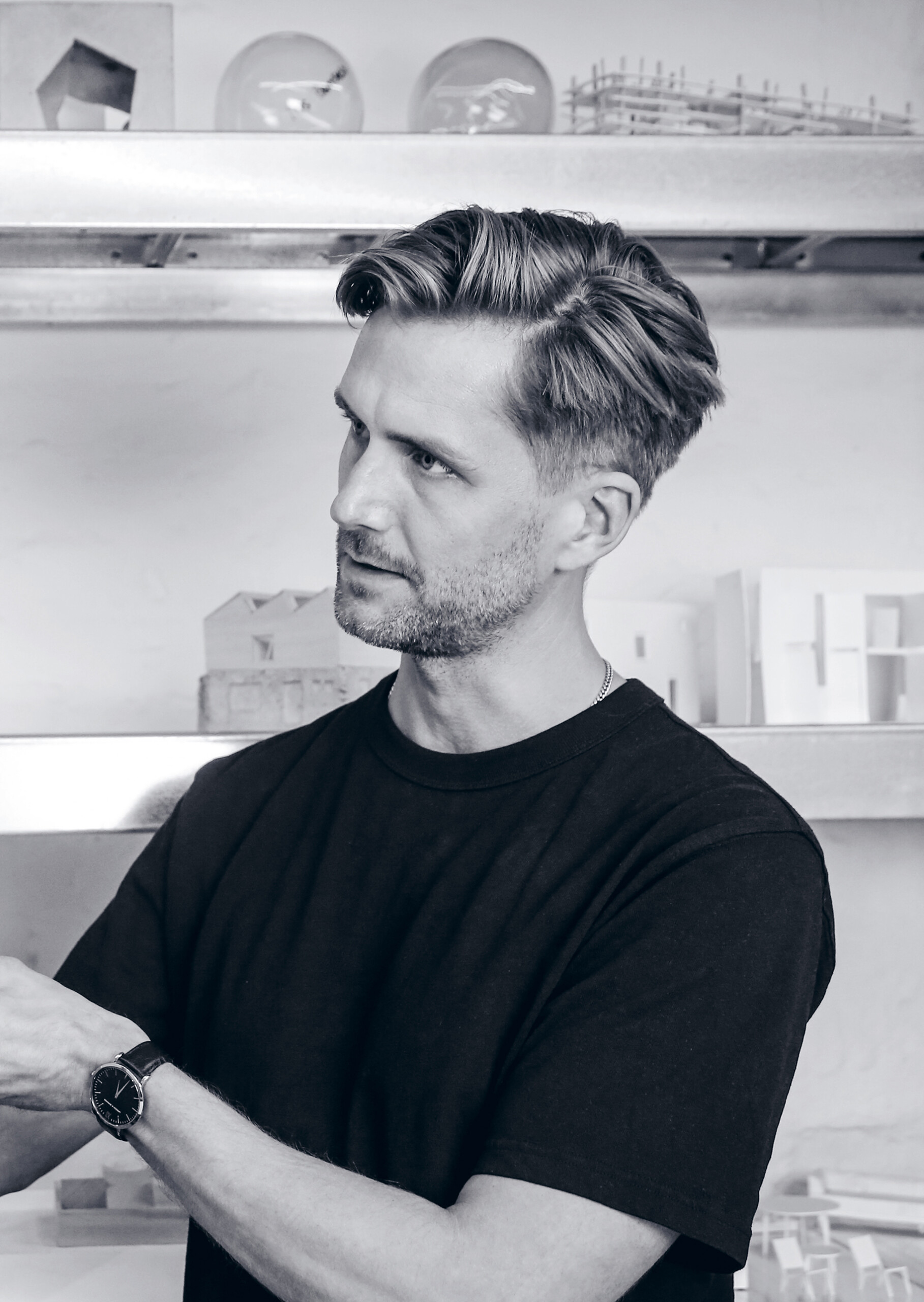Sigurd Larsen & Georg von Hausen
We live in an era of change. An era that requires new ideas — and invites us to forge new paths.


Can you sum up the idea behind Stage in a few words?
G V
H
Stage is a sofa that aims to break down every barrier.
S
L
Most sofas start off as modular designs that you can fit into your living space, but then they reach a steady state and are stuck there. This sofa is a chameleon that can change and transform–both in shape, colour and fabric with replaceable covers, and by changing around the sofa elements, because the back and seat modules can be combined in a whole lot of ways.
G V
H
And a third focus is naturally the exceptional design language. To sum it up in three words, Stage is iconic, modular and adaptable.
-
-
-
-
Why did you choose the name Stage for the sofa?
G V
H
Well, that’s what it is—a stage for you and for your home, a haven for cosy evenings, a workplace or a place to meet friends. It’s an invitation to interact with people and can adjust to suit a whole range of different usage scenarios. it’s a model for a way of life that is reflected in the piece itself.
-
-
-
-
Sigurd, you’re an architect and a designer rolled into one, which gives you the edge over many other designers because in Germany at least, they’re usually separate professions—one supplies homes and urban planning, the other supplies products. Is training in Denmark a broader, more open affair?
S
L
In Denmark architects traditionally do everything and we view a building as a kind of universal artwork, including its furnishings and the landscape it’s set in. In our interior spaces, the interior design extends right up to the door handle. So I think it is a little better, yes. Our furniture designs are created specifically for a building, and many products involve some transdisciplinary aspect, something exciting. Anyway, I think my mindset is a bit different from that of a trained furniture designer.
-
-
-
-
What’s different about your mindset, and why is the result different?
S
L
I’m not such a slave to the measuring tape, and I’m passionate about details, but even more passionate about concepts. The most important thing for me is for a product to have a good idea behind it. You notice when objects are designed as more than merely a solution to a problem, but have some level of storytelling behind them.
-
-
-
-
In recent years Danish design has been reduced to a single idea: hygge. Is the Stage sofa hygge?
S
L
Definitely. People can be hygge too, by the way. It means they’re comfortable to be around. It is a very useful and flexible word and is used a lot. In other countries it’s often linked to interior design, and becomes a big soft, pillowy, warm island. We have a space within a space that offers intimacy. That’s really the essence of the idea.
-
-
-
-
That sounds like rather a lot of contradictions in a single piece of furniture. On the one hand it’s quite an intellectual concept that’s designed to be flexible and adaptable, but on the other hand it’s also supposed to be warm and welcoming. That echoes a world that has become fairly complex and hard to navigate with any clarity, which makes people want to close the door and relax despite their awareness that they won’t be able to escape that complexity.
S
L
That’s why I designed a piece with an attractively intellectual presence, a sofa with a powerful idea, with charisma and a special language of form: somewhat rounded, somewhat baroque, slightly chubby. It’s an attractive, pleasant presence with intellectual flair. After all, you can have both.
G V
H
It’s not only a stage for cosiness; it’s a space for everyone, because the format of our living spaces has changed. There used to be a living-room, a dining area and a kitchen, all separate from one another; today those areas are interconnected, basically for the very simple reason of lack of space, but also because people are seeking a feeling of openness and freedom in their homes. Today interaction is important, for example when friends move between kitchen and living areas at home. To reflect this, we made Stage multifunctional.
-
-
-
-

Please select an offer and read the Complete Article Issue No 12 Subscriptions
Already Customer? Please login.
